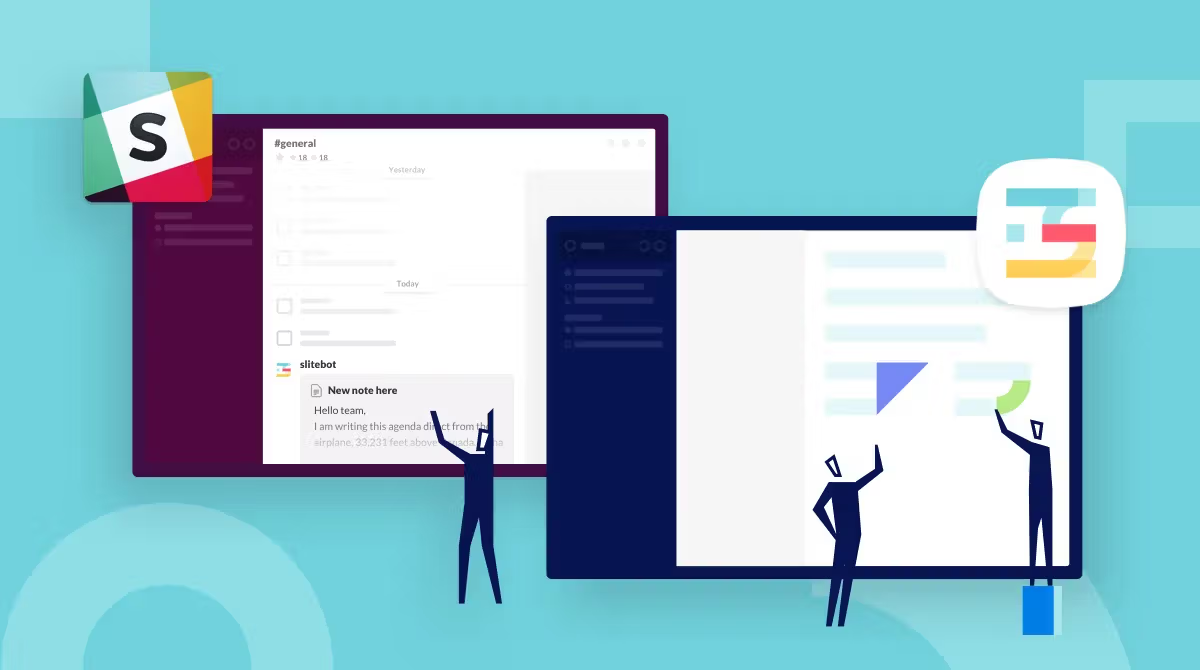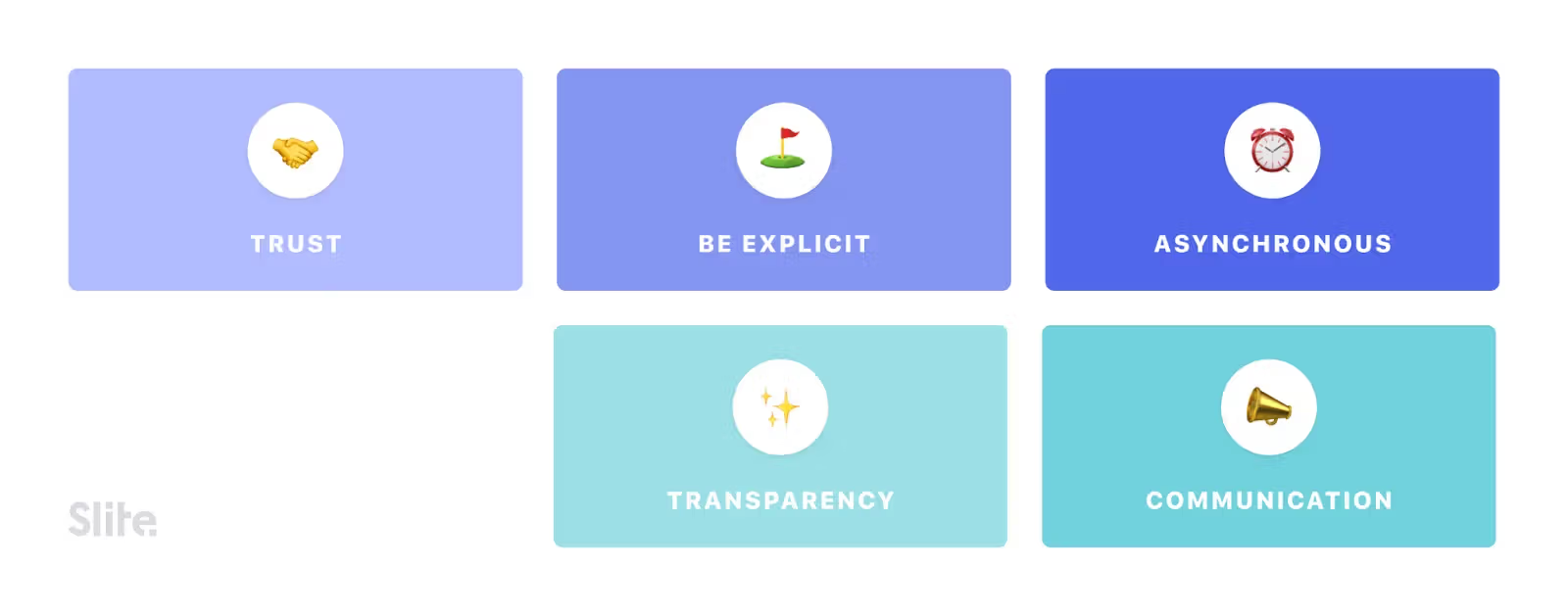Put simply, if you want to communicate effectively, you'll need to start embracing synchronous and asynchronous communication.
These two communication methods are discussed especially often in relation to work environments. Naturally, communication is a big part of our day-to-day professional lives, how we feel in the workplace, and ultimately, overall business success.
Asynchronous communication is commonly associated with remote work, whereas synchronous communication is often talked about in relation to traditional office environments with teams that meet face-to-face.
Nevertheless, in this guide you'll find out how both synchronous and asynchronous communication can be beneficial to teams of all kinds. Keep reading to discover what they are, how they're different, how to use them to your advantage, what their benefits are, and the best tools out there that'll help you use them to their full extent.
What is synchronous communication?

Synchronous communication is communication that's happening in real-time. That means that two or more parties are exchanging information at the same time without any delay. An easy way to remember what synchronous communication is is by thinking of it as "in sync" communication.
Synchronous communication can happen across a variety of different communication channels and in different environments, for example:
- Chats and instant messages on platforms like Slack
- Video conferences on platforms like Zoom
- Phone calls
- In person-chats and one on ones
- Company wide or team meetings
Synchronous communication is most often associated with traditional office environments. This is because synchronization comes most naturally if a work environment requires employees’ physical presence. However, remote teams use synchronous communication as well, although it's a bit trickier and depends on the context.
What is asynchronous communication?

Asynchronous communication is the opposite of synchronous communication in many ways. Basically, it refers to communication that doesn't happen in real-time. When it comes to asynchronous communications, you should expect some kind of delay or time lag. There won't be any immediate response or immediate feedback.
Some examples of asynchronous communication situations include:
- Pre-recorded video messages on platforms like Loom
- Email messages
- Good old fashioned regular mail
- Communication platform like Slite
By now, it might be obvious why asynchronous communication is largely associated with remote work. Because remote team members do not work in the same place and often in different time zones, they usually can't communicate at the same time. Instead, they communicate within their own time frame and receive messages and other communications with a slight delay.
Here at Slite, we've got a remote team with members working in tons of different locations. We're also big on asynchronous communication. We truly believe its power can be harnessed and beneficial to all workplaces, but more on that later.
What’s the main difference between synchronous and asynchronous communication?
There are several differences between synchronous and asynchronous communication. However, the biggest difference is the most obvious one.
Basically, synchronous communication happens at the same time and asynchronous communication happens with some kind of time delay.
There are also some additional, related differences between the two terms. Synchronous communication, because it happens in real-time, is usually shorter, less thought out, and less planned. It can also be either in-person or virtual.
On the other hand, asynchronous communication tends to be longer, more detailed and planned, and the product of more reflection. It can technically be in-person or virtual, but is more often virtual due to its nature.
When to choose synchronous vs. asynchronous communication
Neither asynchronous nor synchronous communication are better ways to exchange information. They're simply different and serve different purposes. We believe that all kinds of teams need to use both asynchronous and synchronous communications in order to work effectively in the modern day.
Nevertheless, some situations favour synchronous communication whereas other contexts favour synchronous communication. Additionally, if you do any kind of remote work, it's likely that you'll use asynchronous communication a lot more than synchronous communication.
Synchronous communication

Synchronous communication is the best choice if you're discussing something that's changing quickly or is contentious in nature. It's also very useful if the clock is ticking. Take the following situations for example:
- Launching a major campaign or project in the next few days and discussing last minute matters.
- Working on a project with lots of changing elements and requirements.
- Needing to hear someone's opinions on a heated topic as quickly as possible.
These are just a few circumstances where synchronous communication can be useful, and you can see why. They all benefit from the immediate back-and-forth that comes with real-time communication.
Asynchronous communication
Embracing asynchronous communication works best if you're communicating with someone who's working in a different time zone or has a different work schedule than you. It's also possible that your entire team might work in the same time zone, but are unable to get together at a specific time.
Otherwise, it's effective when communicating in a way that's longer, more drawn out, and requires more reflection. You also won't be able to rely on anyone to respond right away.
Asynchronous communication is also one of Slite's 5 Principles of Remote Work.
The following contexts would be well-suited for an asynchronous communication medium, for example:
- Outlining basic principles, guidelines or regulations for your team communication.
- Collaborative team work on Slite documentation or a knowledge base.
- Providing standard project status updates and other news to a project team.
- Starting work on a new project while brainstorming different ideas and directions.
- Assigning tasks or providing feedback.
As you can see, these communications have a different focus. They don't need anyone to respond right away. They benefit from slower, more thoughtful communication and reflection. They allow both sender and receiver to collect their thoughts at their own pace and bring them together at a later date.
Asynchronous communication best practices

It can be difficult to get used to asynchronous transmission if you're used to receiving information synchronously. However, if you integrate these best practices into your work, you'll find that everything makes sense.
When used correctly, asynchronous communication has incredible potential and great advantages for remote teams.
Bring as much asynchronous communication as you can onto one platform
Asynchronous communication is a method that works best when you dedicate one (or just a couple) platforms to it. This is purely for access reasons. It should be easy for your team to find all your asynchronous communications in one place, rather than having to look through a variety of asynchronous communication tools.
Naturally, we think that Slite is the perfect solution for your asynchronous communication needs. Our client, Pumpkin, previously struggled with having their information scattered across various project management tools like Google Docs, Confluence, and Trello. Once they put everything on Slite, they created a unique workspace where their whole team could collaborate and share content. Now they have everything from brainstorming documents to meeting minutes to process documentation hosted with us.
Know when to use asynchronous communications over synchronous communications
As discussed earlier in this guide, asynchronous communication and synchronous communication are very different and are suitable for different situations. As such, it's important to know how they're different and what situations are most appropriate to use synchronous vs. asynchronous.
If you need a reminder, scroll up to review the most appropriate contexts for both kinds of communication. Basically, if you need feedback right away or the clock is ticking, don't rely on asynchronous communication. It's best used in situations that would benefit from slower, more thorough communication with lots of time to reflect and review.
Make sure your team is on the same page
Like most things that involve team collaboration, it's important to ensure that your colleagues are on board. You won't be able to take full advantage of synchronous vs. asynchronous communication if your team doesn't know the difference between them.
If you're implementing a synchronous communication channel or strategy, hold a meeting to explain it to your whole team early on. Make sure that everyone understands how to use it. It's a good idea to put together a process document for people to refer back to when questions come up as well.
Be explicit and thorough in your communications
When using asynchronous communication, it's important to make your messaging detailed, explicit, and thorough.
This can be tricky to get used to because you usually can't rely on things like facial expressions, implicit language or other non-verbal communications that are common with in-person synchronous communication. You’ll also have a larger time gap from message to message, so it's important to provide as much detail as you can to avoid the need for quick feedback.
The best asynchronous communication tools
There are many different asynchronous communication tools out there. To help you narrow down which one will be the best fit for your team, we've curated a list of our top three picks.
1. Slite

We're putting ourselves at the top of the list for a good reason. We're truly passionate about the power of asynchronous communication in the context of remote work. It's one of the foundational elements of our platform, we walk the walk and use it within our own team, and it's even one of our 5 remote work principles.
Basically, here at Slite we strive to help remote teams collaborate better. We also believe that asynchronous communication methods are one of the best ways to do that. Here are just a few reasons why:
- Employees get the headspace they need to focus and create great work
- Meetings are held when everyone has fully formed thoughts and is ready to contribute
- Time, energy, and resources are spent on the best ideas
- More productivity with fewer interruptions
- The creation of a single source of knowledge for the entire company
Basically, Slite's platform allows remote teams to create, collaborate on, organize, and access all the information and documentation they need in one secure, easily accessible workspace. They'll always have access to the most up-to-date information and be able to communicate with team members easily, even if they're working according to different schedules. Talk about a dreamy work set-up.
Best of all, we have a free plan you can use to get started... with no strings attached. Go ahead, discover how asynchronous communication methods can benefit your team with Slite.
2. Loom

Loom is an excellent tool if you're truly embracing asynchronous communication. It allows people to make screen recordings of their desktop and make videos of themselves speaking at the same time. This allows team members to send dynamic instructions, explanations, and answers to others.
Basically, instead of having to rely on synchronous communication in order to explain something over the phone or in a chat, you can record yourself demonstrating it for your colleague to view at their convenience.
Best of all, Loom has a free plan with a limited number of videos. It's perfect for users who are just getting started. Once you're ready to dive deeper into their features, their business plans start from $8 USD per month.
3. Asana

If you want a general software to help manage your asynchronous communication, Asana is a great option. We love it because it helps remote teams manage their tasks and workflows so well that it feels like they're working together in person.
There's not much you can't do on Asana. It works great for everything from project management to workflow management to productivity optimization to calendar building. It doesn't hurt that it pairs well with Slite and Loom, too (Slite integrates with both tools).
Asana has a free plan that's suitable for individuals and small teams. After that, their premium plan starts at $13.49 USD per user per month.
Why is asynchronous communication the future?
As more and more teams worldwide move to remote and semi-remote work set-ups, asynchronous communication is sure to be one of the key communication methods of the future.
Here at Slite, we're a part of the movement towards remote work. We have a remote-first team and love taking advantage of its benefits:
- Emphasis on great work, rather than showing up or showing off
- More focused time leading to more meaningful work
- Round-the-world talent and efficiency
- Freedom and flexibility
However, remote work also comes with challenges of its own. When remote teams work across different time zones and according to their own schedules, they can't rely on quick, synchronous communication the same way an in-house team can. This means that team members need to get used to using asynchronous communication and synchronous communication together in order to communicate effectively.
That's why we're proud to offer Slite as an asynchronous communication tool that makes it easy to do so.

